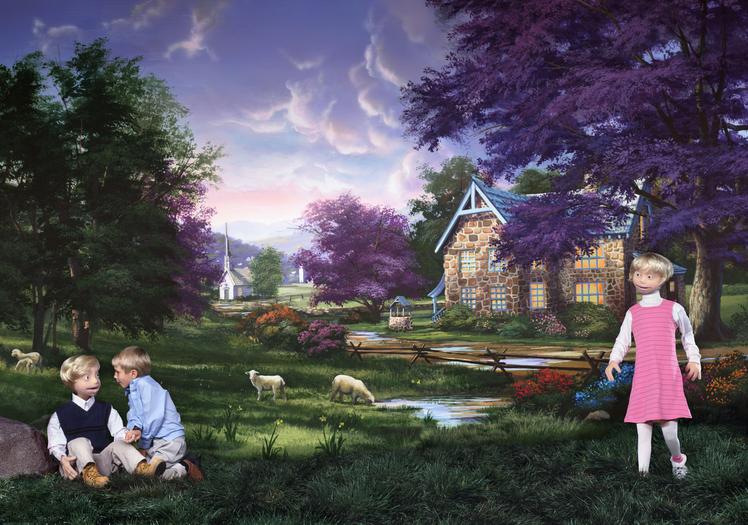Charlie White
And Jeopardize the Integrity of the Hull
April 8 – May 10, 2003
Main Gallery
Photography is an exhausted medium. It is a flat sign system handy for conveying the shorthand messages of business brochures, motivational posters and pharmaceutical ads. The popular photographic image, the "picture," is the very language of our dreams and desires and one in which we are all exquisitely literate-yet it has always existed outside our consideration of what we more seriously regard as "photography." Nevertheless it is in this role that photography has truly found itself-as the shortest means from the real to the ideal.
That which is good, Christian, wholesome, American, sexy, loveable, wondrous-all these and more have found their truest expression in the flatness of the stock image, a Sears family portrait of who we are and what we value that works on us even when we avert our eyes.
"And Jeopardize the Integrity of the Hull" allows us to see the happy and horrific consequences of inhabiting this landscape.
Though each of these eleven photographs recreates flatness in order to consider it, they can't be dismissed with ease. Anxiety, violence, grown-up despair or disillusionment trouble their surfaces. Some images such as "The Persuaders," "Midnight Snack," and "Leda" struggle to express authentic feeling and experience in a language that has reduced emotion to mere code.
Other images move still further from the authentic. "Lovingkindness" and "Plum" are more confrontational, eliciting our own immediate responses to the language of desire and sympathy.
And most synthetic of all, "Heartfelt Singers and Autobiographical Television Series Poster" and "The Love Sisters" each invents a pictorial artifact of popular culture that is then placed within a still life composition. Here we can scrutinize the role that popular images play in our private lives, functioning as "ready-mades" to which we attach our longings, enthusiasms and senses of self.
These photographs suggest that the current myth of photographic lyricism is no more valid than the myth of photographic truth it supplanted. Think sitcom rather than cinema; the photograph as not the infinite space of narrative drama or personal revelation but a limited narrow space of social signification. The images in this series refuse to further the impossible tension between art image and popular image inherent in the wishful thinking of photographic lyricism.
Instead, White's work is a return to sincerity. With the appropriationist's double vision-part self-recognition, part disgust-each image opens up the human complexities and tensions that exist in the very clichés of representation that are supposed to have undermined the human altogether.
